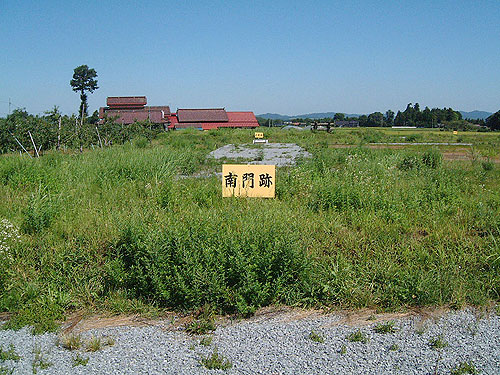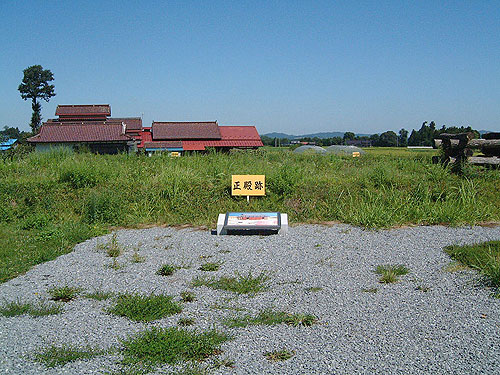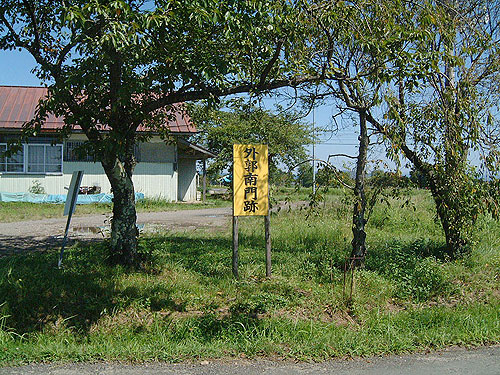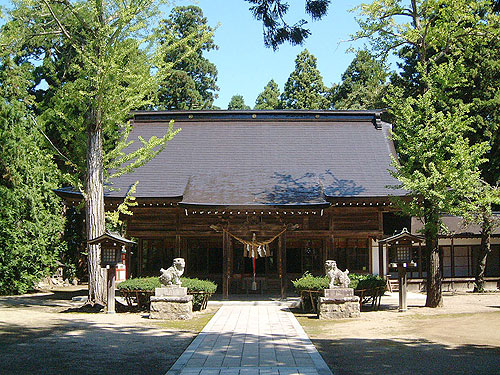place
Ogawa City Mizusawa Ward Sakura River Shibuta
Current name
Biruzawa castle ruins
Terrain and remains
On the Mizusawa Terrace on the right bank of the confluence of Kitakami River and Ginozawa River, it is a flat land of about 50 meters above sea level, and along Prefectural Road No. 270 Nishine Sakura River Line heading from Mizusawa to Kanegasaki. The castle is a square of about 670 meters on a side, and it seems that there is a "south gate" of the gate (layered structure) at the center of the south face of the outer wall, and a 12 meter wide south main road extends south from here. There is a "North Gate" at the center of the north face of the outer wall, but the scale is smaller than the South Gate. It is thought that there was an outer wall east-west gate, but the details are unknown.
There is a trace of the government office in the corner slightly south of the center, and there is a mark of trueness in front of the interior. It is thought that there is a gate on the north, south, east and west of the inner line that divides the government office, and the front of the palace is a square.
history
Gionzawa Castle was built by Sakauetamura Maro (Sakanoue no Tamura Maro) in the enlightenment year 21 (802), and by Tado 3 years (808) from Taga (Trag) Castle (Miyagi Prefecture) It is an ancient castle fence of a national designated historical site to which the Chinjufu was transferred. Excavation has revealed that it is an institution and institution that governs the northern half of the ancient land country.
The location of the "Guijin" in the middle of the Kitakami River basin appears in history with the 7th year of the latter half of the 8th century (776), along with the northern progression of the Tohoku administration of the Imperial Court. It is at this stage that the target of attack by the Ritsury 政府 government has been squeezed into the "land of the gallstones", the country's largest Emishi base. Ginzawa was recognized as the innermost part of "Sankai (Sankai) Nimichi" (meaning that the mountain road (Sando) in the direction of Kurihara and the seaway (Kaito in the Kitakami River basin) merge in the north).
After this, until the 20th anniversary of the enclave (801), the battle between the ancient nation and the Emishi army centered on the Ameri (Attaru) and the Mother Remedies will develop. However, the 21st year of the encyclopedic year, Amami, who was a military helm in the region, and a maternity led a group of over 500 family members, and then they were sent to Kyoto, August of the same year Kawachi Kunayama (Osaka) The execution was carried out, and the resistance of Biwa Emishi ended.
The Imperial Court sent Tamura Maro again the year after the construction of Gionzawa Castle, built Shiba Castle (Kawajo, now Morioka city), and in the case of Hirohito 3 years (812) quit Shiba Castle where it was flooded, and Tokutan Castle ( Tokutanjo, the current Yahata town) was newly built.
The ruins of the castle became a nationally designated historic site in 1919.
traffic
About 15 minutes by car from Mizusawa Station About 5 minutes from Tohoku Suizawa IC




